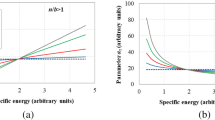Abstract
In spite of potential theoretical and economic advantages of large-diameter ball mills, many manufacturers elect not to build them owing to what is perceived as an excessively large design risk. This is because traditional predictions for mill scale-up to large diameters are not always accurate. Alternative methods of analysis and scale-up are required.
Recent studies have shown that detailed population balance models which account for important grinding subprocesses (grinding kinetics, material transport, and classification) are capable of predicting the performance of small and intermediate-diameter mills (up to 4.3 m, or 14 ft) from small-scale batch tests. These same models are used in the current study to predict the performance of large ball mill 4.7 × 5.5 m, or 15 × 18 ft) at Asarco’s Sacaton operation, a ball mill (5 × 5.8 m, or 16.4 × 19 ft) at Kennecott’s Chino operation, and one of the world’s largest ball mills (5.5 × 6.4 m, or 18 × 21 ft) at Cities Service Pinto Valley operation. Model parameters required for scale-up have been estimated in a 380-mm-diam (15-in. diam) batch mill. Predictions are compared with the results of detailed plant sampling, in the three plants. For the Sacaton and Chino operations, the error of the predictions was found to be less than 2.5%, while the corresponding error for the Pinto Valley operation was less than 2.7%.
It is concluded that proper representation of the major subprocesses of grinding in the model equations is the key to achieving accurate scale-up. Of special importance is the need to account for the size distribution of the grinding media and the influence of the size distribution environment in the mill on grinding kinetics.
Similar content being viewed by others
References
Austin, L.G., 1973, “Understanding Ball Mill Sizing,” Ind. Eng. Chem. Process Design and Development, Vol. 12, No. 2, p. 121.
Austin, L.G., and Brame, K., 1983, “A Comparison of the Bond Method for Sizing Wet Tumbling Ball Mills with a Size-Mass Balance Simulation Model,” Powder Technology, 34, pp. 261–274.
Harris, C.C., and Arbiter, N., 1982, “Grinding Mill Scale-Up Problems,” Mining Engineering, January.
Herbst, J.A., Grandy, G.A., and Mika, T.S., 1971, “On the Development and Use of Lumped Parameter Models for Continuous Open- and Closed-Circuit Grinding Systems,” Mineral Processing and Extractive Metallurgy, Vol. 80, pp. C193–C198.
Herbst, J.A., and Fuerstenau, D.W., 1973, “Mathematical Simulation of Dry Ball Milling Using Specific Power Information,” Trans., SME-AIME, Vol. 254, p. 343.
Herbst, J.A., Grandy, G.A., and Fuerstenau, D.W., 1973, “Population Balance Models for the Design of Continuous Grinding Mills,” paper 19, XIMDC, London.
Herbst, J.A., Rajamani, K., and Kinnesberg, D.J., 1977, “ESTIMILL: A Program for Grinding Simulation and Parameter Estimation with Linear Models,” University of Utah, Salt Lake City, UT.
Herbst, J.A., and Fuerstenau, D.W., 1980, “Scale-Up Procedure for Continuous Grinding Mill Design Using Population Balance Models,” International Journal of Mineral Processing.
Herbst, J.A., Siddique, M., Rajamani, K., and Sanchez, E., 1982, “Population Balance Approach to Ball Mill Scale-Up: Bench and Pilot-Scale Investigations,” Trans., SME-AIME, Vol. 272.
Herbst, J.A., and Rajamani, K., 1982, “Developing a Simulator for Ball Mill Scale-Up — A Case Study,” Design and Installation of Comminution Circuits, SME Press, pp. 325–342.
Hinkfuss, D.A., 1976, “The Bougainville Copper Limited Concentrator,” Flotation: A. M. Gaudin Memorial Volume, Vol. 2, Chapter 40.
Kavetsky, A., and Whiten, W.J., 1982, “Scale-Up Relations for Industrial Ball Mills,” Proceedings, Australas, Inst. Min. Metal., No. 252.
Kinneberg, D.J., 1980, “A Comparison of Model for the Simulation of Open-Circuit Ball Mill Grinding,” MS thesis, University of Utah, Salt Lake City, UT.
Rajamani, K., Herbst, J.A., and Tu, J., 1983, “Prediction of Residence Time Distributions from Ball Mill Design and Operating Variables,” Proceedings of the Pacific Region Meetings of the Fine Particle Society, Hawaii.
Reid, K.J., 1965, “A Solution to the Batch Grinding Equations,” Chem. Eng. Sci., Vol.20.
Steane, R.A., and Hinkfuss, D.A., 1979, “Selection and Performance of Large Diameter Ball Mills at Bougainville Copper, Ltd., Papua, New Guinea,” Proceedings of the Eleventh Commonwealth Mining and Metallurgical Congress, Hong Kong, 1978, pp. 577–584, Institution of Mining and Metallurgy, London.
Author information
Authors and Affiliations
Additional information
SME preprint 83-455, SME-AIME Fall Meeting, Salt Lake City, UT, October 1983. MMP paper 83-652. Manuscript October 1983. Discussion of this paper must be submitted, in duplicate, prior to July 31, 1985.
Rights and permissions
About this article
Cite this article
Herbst, J.A., Lo, Y.C. & Rajamani, K. Population Balance Model Predictions of the Performance of Large-Diameter Mills. Mining, Metallurgy & Exploration 2, 114–120 (1985). https://doi.org/10.1007/BF03402606
Published:
Issue Date:
DOI: https://doi.org/10.1007/BF03402606




